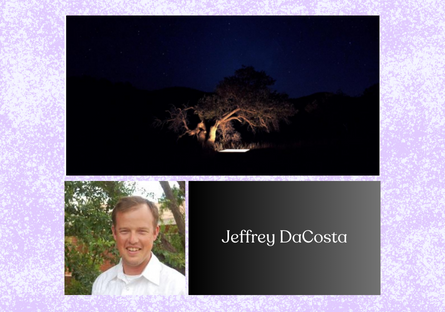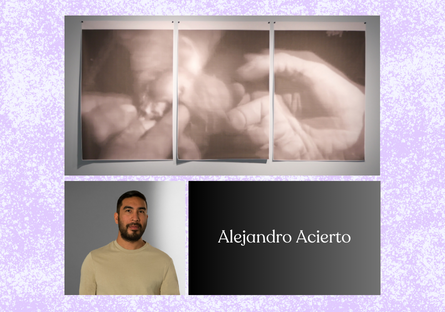




Gateway to the Arts Features Works of 5 Arizona Artists
Come one, come all to Estrella Mountain Community College’s (EMCC) Gateway to the Arts Spring 2024 Fine Art Exhibit! Featuring the works of five Arizona artists, the exhibit is spread throughout the school’s main campus, 3000 N. Dysart Road, Avondale, and can be seen during college business hours.
Agave Hall (formerly “Kom C”) houses the works of Jeff DaCosta and Edgar Fernandez. The exhibit piqued DaCosta’s interest because it’s in a space that facilitates deeper inquiry.
“I cannot think of a better place than the Estrella Mountain Community College campus,” the Tucson artist said. “With faculty and students exploring art as both a form of personal expression and investigation of the world at large, I believe the pieces I submitted very much align with this approach.”
The pieces chosen for the exhibit are from his “Parcel” series — a series of photographs taken in the desert at night. He doesn’t consider himself a photographer, instead approaching his work conceptually.
“From the concept, I determine the method and material that will best accomplish it,” he said. “The use of photography to capture what I would characterize as an unwitnessed event is the means by which to document the occurrence and to present it as a dialog to the public.”
Estrella Hall features photographs by Maria Rivas. The Phoenix artist took up landscape photography about three and a half years ago but now mainly focuses on photography based on life experiences.
“I create a scene based on a moment in their life journey,” she said. “ We all experience loss, heartbreak, and joy, and I hope that my photography resonates with others as no one on this earth will leave it without experiencing life's enigmas.”
Rivas experiments with charcoal, watercolor, and pencil, bringing them to life within her photography, which is digitally enhanced with Photoshop. She also practices the art of persuasion when it comes to some of her models.
“My niece is the model for the Catrina photos,” she said. “And I had to bribe her with a trip to Barnes & Noble to get this one done!”
Editor’s note: Pretty good bribe in our book.
The Komatke Enrollment Center is where Alejandro Acierto’s and Bela Fidel’s works are housed. Acierto’s works have been exhibited nationally and internationally, but this exhibit is near and dear to his heart because it’s local. The Chicago native moved from Nashville to the Valley of Sun about two and a half years ago to take a teaching job at Arizona State University.
“Many of my recent exhibitions have been in other cities, so it has been great to be able to start establishing myself in a city that's still new to me and where I'm still learning the creative landscape,” he said.
The pieces on view are part of a series called "Strategies for the evasion of capture" that began with research about the Turnix worcesteri, a data-deficient bird in the Philippines. The central image depicts a moment from the only existing contemporary video footage of the bird still alive caught on Philippine national television in the 2000s.
“The image blends three adjacent frames from the footage to give a slightly blurred effect that suggests the bird's elusive nature,” he said.
Fidel’s works are in a variety of mediums including encaustic, one of her favorites. For those not in the know, encaustic painting is a technique using pigmented beeswax that is fused to the surface using heat.
“Encaustics are addictive,” the Phoenix artist said. “It is a very malleable medium in the sense that one can do almost anything with it. The exploration never ends, ideas keep coming, endlessly. One can use it with other mediums as well, which increases its appeal.”
Fidel also works in oils (her other favorite), acrylics, and mixed media.
“I selected the works for this exhibit for their variety and interest,” she said. “Oils, acrylics, and watercolor are the most known mediums. The materials I use in my mixed media work (pastes, plasters, and compounds) are less known and I felt they would arouse a different kind of interest, would inform the viewers differently, and expand their awareness about art mediums.”
The exhibit will be available for viewing throughout the spring semester. Artists are compensated monetarily. Interested in submitting your artwork for the next exhibit? The call for submissions for the Gateway to the Arts Fall 2024 Fine Art Exhibit will open in March and can be found at https://azarts.gov/opportunities/arts-opportunities/.